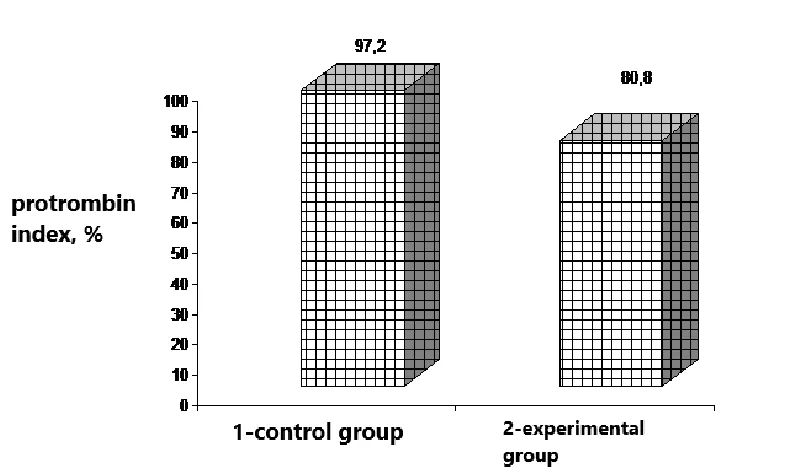Open Journal of Environmental Biology
On the question of the mechanism of the general toxic action of lead nitrate
KZh Dakieva*
Cite this as
Dakieva K (2023) On the question of the mechanism of the general toxic action of lead nitrate. Open J Environ Biol 8(1): 015-017. DOI: 10.17352/ojeb.000035Copyright
© 2023 Dakieva K. This is an open-access article distributed under the terms of the Creative Commons Attribution License, which permits unrestricted use, distribution, and reproduction in any medium, provided the original author and source are credited.Annotation
The leading unfavorable factor in the working environment that affects the health of miners is polymetallic dust, which contains a large number of toxic chemical elements. The study of the chemical composition of the floating dust in the air environment of the quarries of the East Kazakhstan copper-chemical plant and processing plant (Mamyrbaev, Konakbaev, 1992) showed a high content of lead, selenium, antimony, arsenic, and other trace elements.
At the same time, the assessment of the state of the coagulation and anticoagulation system of blood under separate exposure to metals acquires particular relevance.
Given the above, the study aimed to study the influence of several production factors on the coagulation and anticoagulation system of the blood, namely, the substantiation of the mechanisms of the toxic effect of the metal-lead nitrate, as one of the main factors in the model experiments on animals.
Widespread contamination of various environmental objects with metals is accompanied by a deterioration in the health of the population and an increase in general and occupational morbidity. Lead, antimony, mercury, and arsenic selenium are among the most common pollutants with high toxicity, which are indicator air pollutants of the working area at the mining enterprises of East Kazakhstan (Konakbaeva, 1994).
The nature of the general toxic effect of lead, selenium, antimony, and arsenic has been studied in detail and summarized in numerous monographs and manuals [1]. The revealed changes in the hemocoagulation system in workers employed in lead production [2,3] and under the action of lead nitrate on laboratory animals dictate the need for targeted research to study the functional state of the coagulation and anticoagulation blood systems. The relevance of the study of hemostasis indicators is due to the fact that miners employed in open pit mining have not carried out such studies at all, while all the main technological processes of ore mining (drilling and blasting, excavation of rock mass, its loading and transportation, enrichment) are accompanied by the release of the complex chemicals, the most harmful pollutants among which are metals. The need for this type of research is also increasing because the pathological process among workers in the mining industry most often involves organs and systems that are directly related to the regulation of hemostasis (Shukaeva, et al. 1989; Kiselev, et al. 1993; Koldaev, et al. 1993).
The tests are used to make it possible to judge the state of the coagulation and anticoagulation system of the blood in different phases. Since a detailed description of all the indicators of the coagulogram used by us was reflected in numerous instructions and guidelines (Kost, 1975; Kozlovskaya, Nikolaev, 1984), the methodology for their implementation is not described in our work. The received material was subjected to statistical processing.
Experimental conditions and methods for studying blood coagulation
We have carried out studies of the coagulogram under experimental conditions on white sexually mature male rats weighing 150 grams - 160 grams. A total of 60 animals were taken into the experiment. The test substance was applied to the abdominal part of the animal's body with an area of 2 x 2 cm, which was washed off after an hour and so on for a month (skin-resorptive method). Daily applied doses of a chemical - lead nitrate 0.032 mg (Trachtenberg, et al. 1987; Ershov, Pletneva, 1989).
To assess the functional state of the coagulation and anticoagulation system of the blood of rats, the following coagulogram tests were determined. Fibrinogen concentration according to the Rutberg method (Kozlovskaya, Nikolaev, 1984), prothrombin index according to Quick (Kozlovskaya, Nikolaev, 1984), plasma recalcification according to Begerhof (Kost, 1975), kaolin time according to Barkagan and Baluda (Menshikov, 1986), plasma tolerance to heparin according to the Koller method (Kost, 1975), ethanol test according to Menshikov (Menshikov, 1986).
The tests are used to make it possible to judge the state of the coagulation and anticoagulation system of the blood in different phases. A detailed description of all the indicators of the coagulogram used by us is reflected in numerous instructions and guidelines (Kost, 1975; Kozlovskaya, Nikolaev, 1984: Lyubina, et al. 1914; Menshikov, 1986; Baluda, et al. 1988), in our work the method implementation is not described.
The resulting material was processed by the methods of variation statistics with the calculation of the arithmetic mean (M), the average error of the arithmetic mean (m), and the standard deviation (G) of each variation series. The coefficient of reliability (P) was evaluated according to the table of values of the criterion (T) by the Student. The magnitude of the difference between the two statistical indicators was considered significant at p ≤ 0.05.
The research results showed that in the process of poisoning experimental animals with lead nitrate, there is an increase in the concentration of fibrinogen in comparison with control animals, and amounted to 68.9% (Table 1). There is an increase in the blood of experimental animals of the prothrombin index (Figure 1). When comparing the average values with the control group, the difference is significant. A shortening of the plasma recalcification time was found in experimental animals and amounted to 67.3%. A statistically significant increase in plasma tolerance to heparin was found.
Thus, most of the coagulogram tests change under the action of lead nitrate in the experiment, and an increased coagulation activity of the blood is noted. Changed indicators characterizing the first phase of the blood coagulation process (recalcification time, plasma tolerance to heparin), phase II (prothrombin index), and phase III (fibrinogen concentration).
Discussion
Blood coagulation is a complex biochemical and physico-chemical process, in its essence. mainly. is an enzymatic process. At present, new data have been obtained that clarify the essence of enzymatic reactions that ensure the process of blood coagulation. In addition to fibrinogen, prothrombin, tissue thromboplastin and calcium ions, other substances that are found not only in plasma, but also in blood cells, as well as in many tissues and organs, take part in the process of blood coagulation. Some factors of the blood coagulation system provide and accelerate the process of hemocoagulation, while others slow down or stop it. Most of the factors are formed in the liver and vitamin K is necessary for their synthesis. A significant number of plasma factors are proenzymes related to the globulin fraction of proteins. In the active form - enzymes, they pass in the process of coagulation of the blood. With a lack or decrease in the activity of blood coagulation factors, pathological bleeding can be observed.
The functional state of the coagulation and anticoagulation system of human blood is influenced by production factors, in particular workers employed in open pit mining.
The open pit method of ore mining is the main one in the extraction of ores of ferrous and non-ferrous metals, non-metallic minerals. Mining enterprises are characterized by a complex of production factors that can affect the health and performance of workers. These include special microclimatic conditions - dust, gases, vibration and noise. A powerful source of dust in quarries are blasting, drilling. The release of gases occurs during blasting, the operation of vehicles, the processes of oxidation and combustion of minerals.
The works of Z.K. Konakbaeva and A.A. Mamyrbaeva (1991), Z.K. Konakbayeva (1992) noted the presence of dust of a large number of hazardous trace elements of selenium, lead, antimony, arsenic and others, high toxic properties of these metals were established, and significant metabolic disturbances were found in workers of the East Kazakhstan Copper and Chemical Combine, accompanied by shifts in the endocrine system. , cardiovascular, nervous system, significant disturbances in the metabolism of lipids and carbohydrates, mineral metabolism, activity of enzymes that characterize the functional state of the liver, kidneys, gastrointestinal tract.
As the results of our study showed, almost the entire technological process of extraction and processing of polymetallic ore is accompanied by the release of toxic chemicals into the air of industrial premises, which exceed several times the maximum permissible concentrations.
This whole complex of unfavorable factors of the working environment, combined with the microclimatic working conditions that heat up in summer and cool in winter, leads to the formation of a pathology specific to the mining industry among workers.
During experimental studies, we have revealed significant changes in most of the coagulogram parameters under the action of lead nitrate on laboratory animals.
We used the skin-resorptive method of poisoning rats, since high toxic properties of metals (selenium, lead, antimony, arsenic) were established when entering through the skin (Konakbaeva, Mamyrbaev, 1992). A decrease in the prothrombin index in the blood (second phase of coagulation) was found. Changes were revealed in the third phase, the phase of fibrin formation - an increase in the concentration of fibrinogen. The indicator reflecting the internal mechanism of coagulation - kaolin time - is shortened. Such a picture qualifies as a tendency to hypercoagulability.
Workers exposed to toxic substances, in a state of hypercoagulability, may develop the following diseases: thrombophlebitis, thrombosis, varicose veins and other diseases.
- Khasanova KA, Rusina NV. Lead lesion, and blood coagulation system//Proceedings of the Tajik Medical Institute.1980;108-113.
- Alferova EG. Changes in the coagulation ability of blood in various clinical professional lead intoxication//Proceedings of the North Ossetian Medical Institute.1980; 21-22.
- Ilyukhina LE. Changes in the hemocoagulation system in workers in contact with low doses of lead//A-Ata.-Health of Kazakhstan.-1988; 9: 42-44.

Article Alerts
Subscribe to our articles alerts and stay tuned.
 This work is licensed under a Creative Commons Attribution 4.0 International License.
This work is licensed under a Creative Commons Attribution 4.0 International License.


 Save to Mendeley
Save to Mendeley
